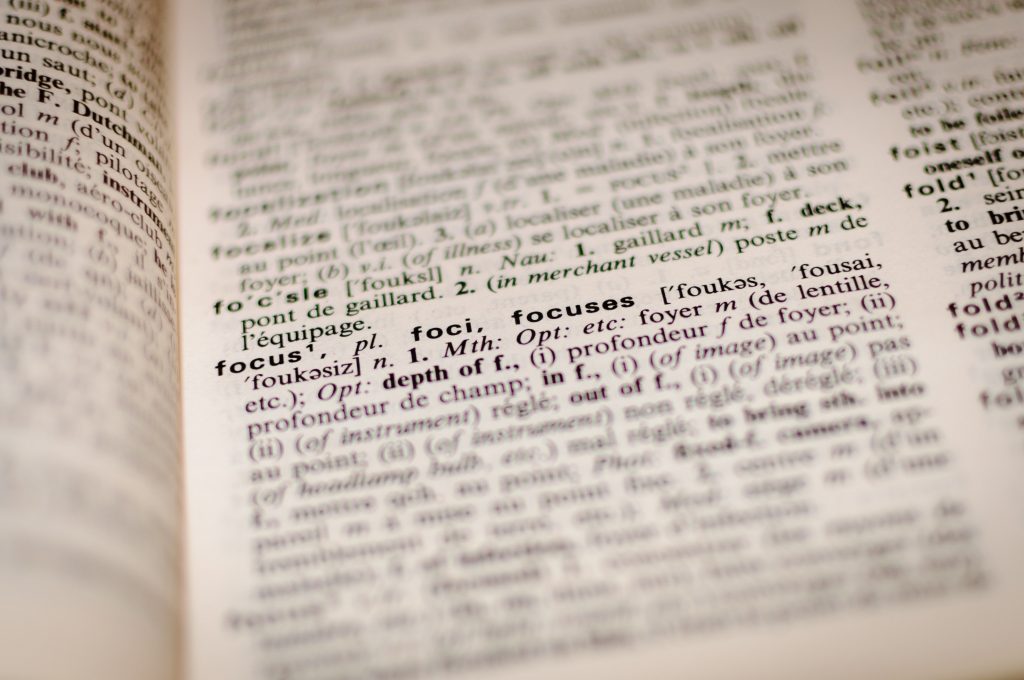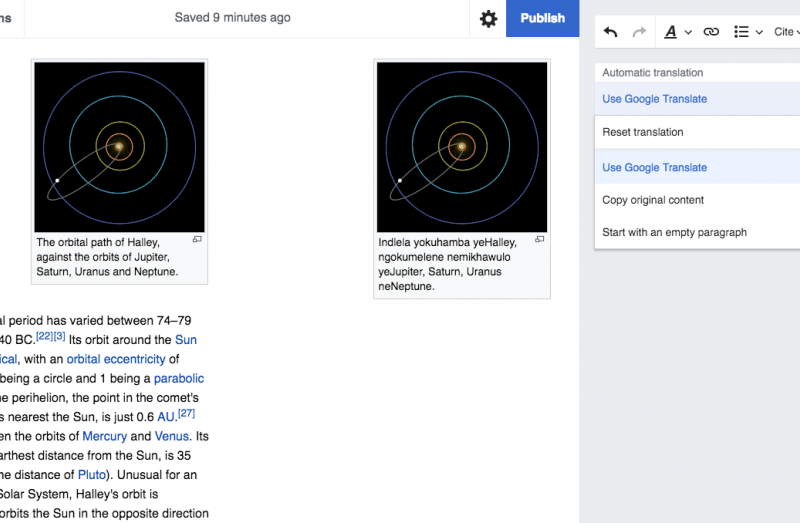On International Translation Day, we are opening up early access to version two of the content translation tool, which simplifies the process of translating Wikipedia articles for Wikimedia’s volunteer translators.
First released in January 2015, more than 350,000 Wikipedia articles have been created using the tool.
Content translation’s second version, previewed last April, is a major refactoring and architectural update. The goal is to be a solid and reliable translation tool that facilitates the participation of newcomers. The new version integrates the editing surface used by the visual editor, which provides more reliable manipulation of wikitext-based content as well as advanced editing capabilities. This allows translators to insert and edit templates, tables, multimedia, categories, and other rich content elements; doing so with the assistance of reliable copy and paste, and undo facilities; and producing cleaner wikitext as a result.
In addition, better guidance is provided for users to make sure that translations made with the tool are of good quality. For example, when a translator has not edited enough the initial translation, the tool points to the specific paragraph that needs to be reviewed, encouraging users to create good quality translations.
The new version is still in active development, but it can be used right now to translate Wikipedia articles. We’d like to encourage translators to opt into the new version and report any issues they may find.
Here’s how: go to your “beta” preferences, then the content translation dashboard, and click the “Try the new version” link. You can go back to the current version of content translation at any time by clicking “Disable” at the dashboard.
Amir Aharoni, Strategist (Contractor), Language
Wikimedia Foundation




